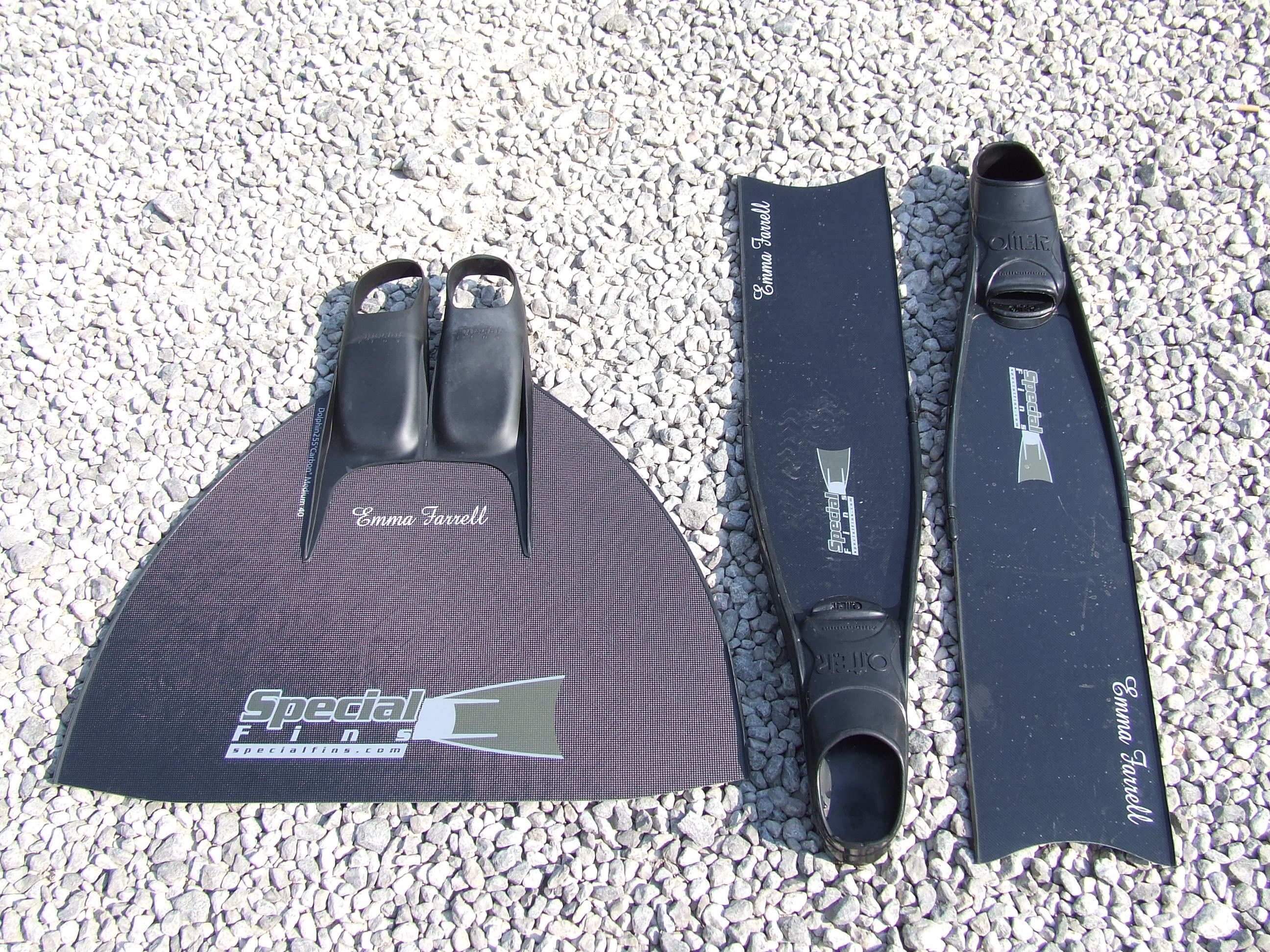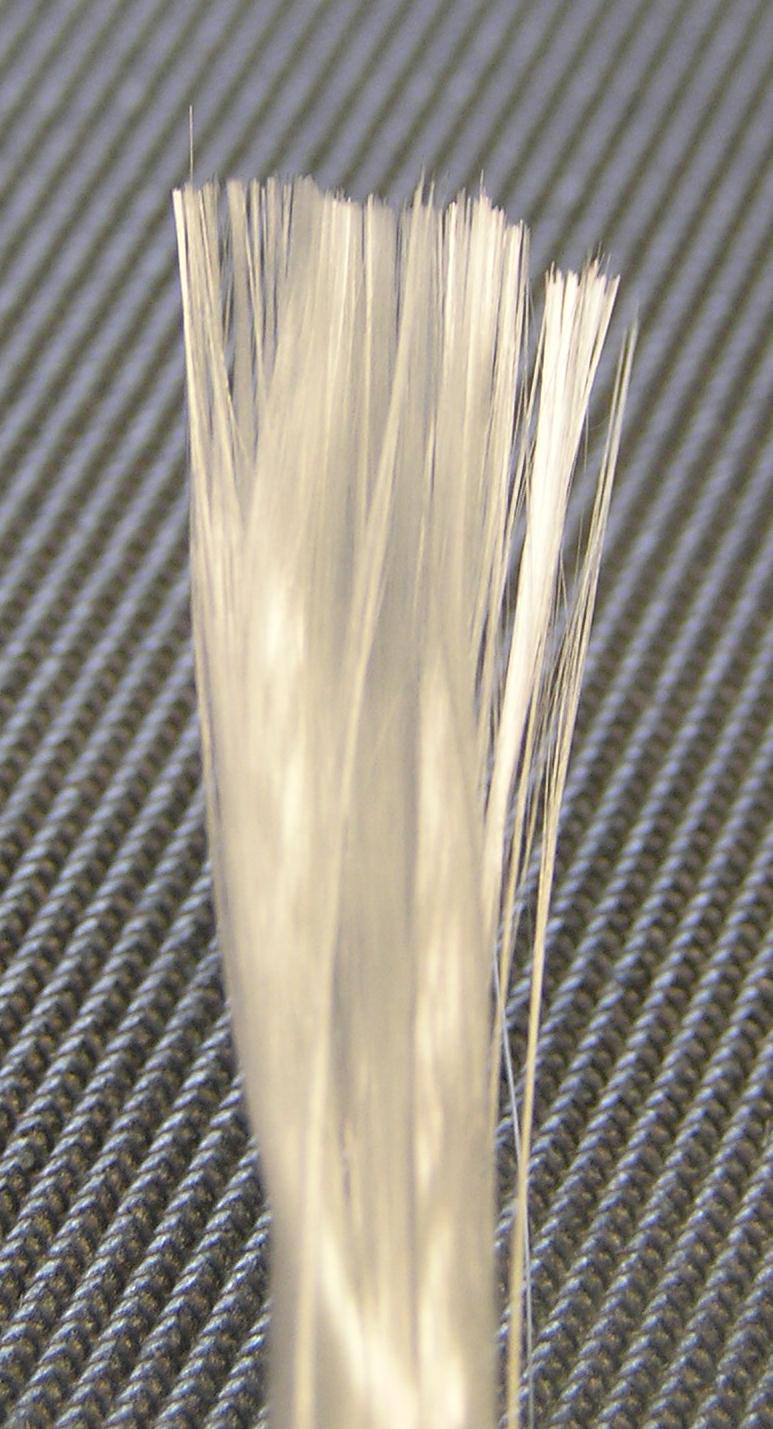|
Monofins
A monofin is a type of swimfin typically used in underwater sports such as finswimming, free-diving and underwater orienteering. It consists of a single or linked control surface (fluid dynamics), surfaces attached to both of the diver's feet, emulating the Cetacea#Fluke, fluke of Cetacea, Cetaceans like whales or porpoises. The arrival of the monofin in the early 1970s led to the breaking of all finswimming world records by the end of the decade due to the improved performance possible when used instead of two ordinary swimfins. Use To differentiate between the use of monofins and conventional fins, the latter are sometimes referred to as stereo fins or bi-fins. The monofin swimmer extends arms forward, locking hands together, locking the head between the biceps, in a position known as Streamline (swimming), streamline position. The undulating movement starts in the shoulders, with maximum amplitude towards the hips; the legs almost don't bend to transfer the movement to th ... [...More Info...] [...Related Items...] OR: [Wikipedia] [Google] [Baidu] |
Swimfin
Swimfins, swim fins, diving fins, or flippers are finlike accessories worn on the feet, legs or hands and made from rubber, plastic, carbon fiber or combinations of these materials, to aid movement through the water in water sports activities such as swimming, bodyboarding, bodysurfing, float-tube fishing, kneeboarding, riverboarding, scuba diving, snorkeling, spearfishing, underwater hockey, underwater rugby and various other types of underwater diving. Swimfins help the wearer to move through water more efficiently, as human feet are too small and inappropriately shaped to provide much thrust, especially when the wearer is carrying equipment that increases hydrodynamic drag. Very long fins and monofins used by freedivers as a means of underwater propulsion do not require high-frequency leg movement. This improves efficiency and helps to minimize oxygen consumption. Short, stiff-bladed fins are effective for short bursts of acceleration and maneuvering, and are useful for bod ... [...More Info...] [...Related Items...] OR: [Wikipedia] [Google] [Baidu] |
Finswimming
Finswimming is an underwater sport consisting of four techniques involving swimming with the use of fins either on the water's surface using a snorkel with either monofins or bifins or underwater with monofin either by holding one's breath or using open circuit scuba diving equipment. Events exist over distances similar to swimming competitions for both swimming pool and open water venues. Competition at world and continental level is organised by the Confédération Mondiale des Activités Subaquatiques (CMAS). The sport's first world championship was held in 1976. It also has been featured at the World Games as a trend sport since 1981 and was demonstrated at the 2015 European Games in June 2015. Rules and description of the sport Competitors are described within the International Rules as 'swimmers' rather than as finswimmers or divers. Classes of competition Competition is divided into two classes: swimming pool and long distance (also called open water). A swimmin ... [...More Info...] [...Related Items...] OR: [Wikipedia] [Google] [Baidu] |
Aluminum
Aluminium (aluminum in American and Canadian English) is a chemical element with the symbol Al and atomic number 13. Aluminium has a density lower than those of other common metals, at approximately one third that of steel. It has a great affinity towards oxygen, and forms a protective layer of oxide on the surface when exposed to air. Aluminium visually resembles silver, both in its color and in its great ability to reflect light. It is soft, non-magnetic and ductile. It has one stable isotope, 27Al; this isotope is very common, making aluminium the twelfth most common element in the Universe. The radioactivity of 26Al is used in radiodating. Chemically, aluminium is a post-transition metal in the boron group; as is common for the group, aluminium forms compounds primarily in the +3 oxidation state. The aluminium cation Al3+ is small and highly charged; as such, it is polarizing, and bonds aluminium forms tend towards covalency. The strong affinity towards ox ... [...More Info...] [...Related Items...] OR: [Wikipedia] [Google] [Baidu] |
Carbon Fiber
Carbon fiber-reinforced polymers (American English), carbon-fibre-reinforced polymers (Commonwealth English), carbon-fiber-reinforced plastics, carbon-fiber reinforced-thermoplastic (CFRP, CRP, CFRTP), also known as carbon fiber, carbon composite, or just carbon, are extremely strong and light fiber-reinforced plastics that contain carbon fibers. CFRPs can be expensive to produce, but are commonly used wherever high strength-to-weight ratio and stiffness (rigidity) are required, such as aerospace, superstructures of ships, automotive, civil engineering, sports equipment, and an increasing number of consumer and technical applications. The binding polymer is often a thermoset resin such as epoxy, but other thermoset or thermoplastic polymers, such as polyester, vinyl ester, or nylon, are sometimes used. The properties of the final CFRP product can be affected by the type of additives introduced to the binding matrix (resin). The most common additive is silica, but other addi ... [...More Info...] [...Related Items...] OR: [Wikipedia] [Google] [Baidu] |
Glass Fiber
Glass fiber ( or glass fibre) is a material consisting of numerous extremely fine fibers of glass. Glassmakers throughout history have experimented with glass fibers, but mass manufacture of glass fiber was only made possible with the invention of finer machine tooling. In 1893, Edward Drummond Libbey exhibited a dress at the World's Columbian Exposition incorporating glass fibers with the diameter and texture of silk fibers. Glass fibers can also occur naturally, as Pele's hair. Glass wool, which is one product called "fiberglass" today, was invented some time between 1932 to 1933 by Games Slayter of Owens-Illinois, as a material to be used as thermal building insulation. It is marketed under the trade name Fiberglas, which has become a genericized trademark. Glass fiber when used as a thermal insulating material is specially manufactured with a bonding agent to trap many small air cells, resulting in the characteristically air-filled low-density "glass wool" family of pro ... [...More Info...] [...Related Items...] OR: [Wikipedia] [Google] [Baidu] |
List Of World Records In Finswimming
The following is the list of world records in finswimming recognised by the sport's governing body, Confédération Mondiale des Activités Subaquatiques (CMAS). CMAS does not recognise short course records. Requirements for recognition of records As of January 2013, CMAS recognises world and other records for the following techniques and distances for both males and females in the age groups of Senior (i.e. 18 years and older) and Junior (i.e. 12 to 17 years old) where these are made in an Olympic-size swimming pool (i.e. 50m length) and are measured by electronic automatic officiating equipment: * Surface finswimming (SF) - individual races for distances of 50m, 100m, 200m, 400m, 800m and 1500m, and relays for 4 × 100 m and 4 × 200 m. * Bi-Fins (BF, also known as ‘Stereo-fins’) - 50m, 100m, 200m and 400m. * Apnoea finswimming (AP also known as ‘apnea’) - 50m. * Immersion finswimming (IM) - 100m, 400m and 800m. The International Rules also allow for recognition of a re ... [...More Info...] [...Related Items...] OR: [Wikipedia] [Google] [Baidu] |
Nemrod
In 1945, Pedro and Juan Vilarrubìs Frerrando brothers found Nemrod Industrias Vilarrubìs, initially dedicated to the manufacturing of diving spearguns. The first spearguns are made with spring, with or without surcompressor followed, two years later, by the rubber ''Tarzan'' and ''Catapulta'' models. In 1953, the ''Comodoro'' pneumatic model is launched, followed by a very long series of models such as ''Crucero, Fragata, Galeon'' and, finally, the ''Clipper'' series, which will succeed until 1998, distinguishable because of their tank, which went from red to black. In parallel, the rubber speargun production expands, always more requested because of their silence action and precision. In the meantime, Nemrod distinguishes itself as the main brand developing in Spain in this period among which Casals, Beltran, Parra, Copino; the latter, soon famous for its sophisticated spearguns. In Nemrod catalogue, near its spearguns in 1957 the S''nark III'' two-hose regulator appears, mean ... [...More Info...] [...Related Items...] OR: [Wikipedia] [Google] [Baidu] |
Kazakh Soviet Socialist Republic
; kk, Қазақ Советтік Социалистік Республикасы) *1991: Republic of Kazakhstan (russian: Республика Казахстан; kk, Қазақстан Республикасы) , linking_name = the Kazakh Soviet Socialist Republic , year_start = 1936 , event_start = Elevation to a Union Republic , date_start = 5 December , event1 = Jeltoqsan riots , date_event1 = 16 December 1986 , event2 = Sovereignty declared , date_event2 = 25 October 1990 , event3 = Renamed Republic of Kazakhstan , date_event3 = 10 December 1991 , event4 = Independence declared , date_event4 = 16 December 1991 , date_end = 26 December , event_end = Independence recognised , year_end = 1991 , p1 = Kazakh ASSR , s1 = Kazakhstan ... [...More Info...] [...Related Items...] OR: [Wikipedia] [Google] [Baidu] |





